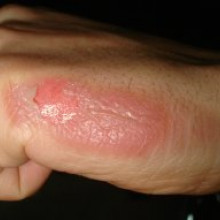In this Question of the Week, we discover the biological basis of burns - just what does happen to your cells when you touch something hot?& Plus, we ask if humans undergo seasonal moulting - do we lose more hair when it's warmer?
In this episode

00:00 - Why do hot objects cause injury?
Why do hot objects cause injury?
We put this to Peter Djiewulski, Plastic and Reconstructive Surgeon, Director of Burns Centre at St Andrew's Centre for Burns.
What happens when somebody gets burned and their tissue is burned is that heat causes direct damage to cells. It denatures proteins within and without cells. It's that injury and the breakup of cells and the contents with in the cells, particularly some of the enzymes within the cells that will initially cause pain but secondarily bits of cells that break down cause local irritation. The cell wall breaks down and that leads to a number of breakdown products which are involved in inflammation and the inflammatory response. Most people have burnt themselves and therefore would be well-aware of the local effects that the burn and the body's reaction to the burn will cause. That is usually swelling, redness and tenderness. At a molecular level these events are mediated by the inflammatory mediators which have effects on, particularly, the tiny ittle blood vessels that go up to and into the skin to make them leaky. This allows fluid which is usually in the blood vessels to leak out and this gives rise to swelling.










Comments
Add a comment